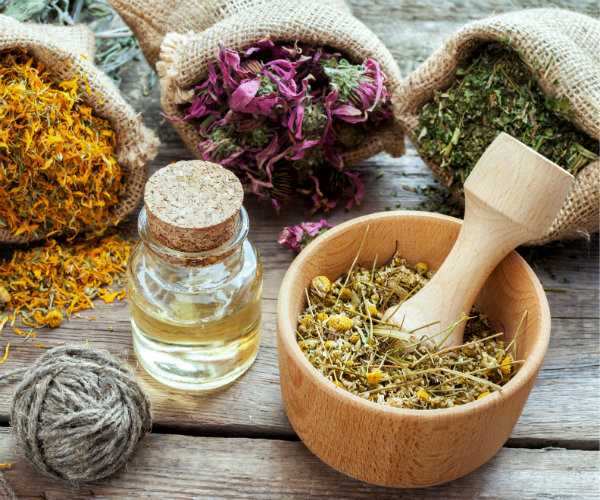Echinacea has been the Rocky Balboa of natural cold and flu remedies
since the 1990s — called a champion for your health one year, only
to be knocked down by health experts the next.
In the late 1990s, it was the king of the ring, racking up
impressive annual sales of $206 million after research suggested it
can effectively combat winter viruses. By 2010 it was practically
washed up, after some studies showed that it had little or no
benefit — with annual sales plummeting to a paltry $115 million.
But the most recent research suggests that Echinacea is ready to
reclaim its crown.
“There seems to be some benefit from taking it throughout the cold
season,” says Dr. Tod Cooperman, president of ConsumerLab.com, which
recently published an extensive product review of Echinacea.
How a big a benefit?
A 25-50 percent reduced risk of catching a cold, Dr. Cooperman tells
Health Radar. That’s on part with other prevention strategies
designed to boost the immune system — such as getting regular
exercise, eating a healthy diet, and managing stress levels.
If you’re one of miserable millions who catch cold after cold
through the winter, that’s huge. Here’s a primer.
What is echinacea? A flowering plant that is native
to the United States and Canada, echinacea includes nine different
species — three of which have been used medicinally: Echinacea
purpurea, Echinacea angustifolia, and Echinacea pallida. Of these,
E. purpurea seems to be the most effective.
How does it work? Researchers believe that
Echinacea prevents colds and flus because it stimulates the immune
system. In laboratories, the herb has been shown to increase
production of infection-fighting white blood cells.
How is it used? “Echinacea is typically used as a
preventive product,” explains Dr. Cooperman. “That’s how it’s most
effective.” Dr. Cooperman advises taking about 900 milligrams per
day of Echinacea extract divided into two or three doses.
Are all products the same? In a word: no. Not any
product will do. “Make sure it has the right species and part of the
plant,” Dr. Cooperman cautions. It’s best to choose extracts or
tinctures which contain either E. purpurea or E. angustifolia, which
are the two best-studied species. It’s also important to choose
extracts made from the above-ground (aerial) part of the plant such
as its flowers, leaves, and stems. Such information should be listed
on the label. Beware of products that list Echinacea as part of part
of a “blend” or “proprietary formula” without specifying the type or
amount. Based on the ConsumerLab.com reportthe top three picks are:
• Swanson Superior Herbs Elderberry Echinacea Goldenseal
Immune Complex.
• Gaia Herbs Echinacea Supreme Liquid.
• A. Vogel Echinaforce.
What does the research show? A Vogel
Echinaforce is a Swiss-made product which was used in a
large-scale study published in 2012. During the study, 755
participants took either A. Vogel Echinaforce or placebo for
four months. The Echinacea group caught fewer colds than the
placebo group (149 versus 188), which wasn’t statistically
significant. But the Echinacea group experienced 26 percent
fewer cold “events,” which was statistically significant.
Such an “event” was defined as a combination of a cold and its
duration. In addition, the Echinacea group was significantly
less likely to catch more than one cold. When they did come down
with a cold, they took less pain medication. The researchers
noted that Echinacea was particularly effective at preventing
colds in people who smoked, had high levels of stress, or had
trouble sleeping.
Does it treat viruses? Although most research
supports the use of Echinacea to prevent colds and flus, some
studies suggest it also may be a valuable treatment. A 2015
study showed that a hot drink blend of Echinacea and elderberry
is just as effective as the prescription drug Tamiflu at
treating symptoms of influenza.
The preparation is available in Europe and Canada, and is
expected to hit the U.S. market sometime in 2016. At the first
sign of a cold, Dr. Cooperman recommends starting a 900
milligrams daily course of Echinacea extract divided into two or
three doses per day. If you take this amount for one to two
weeks, you may be able to decrease the severity of your illness
and shorten its duration.
Is it safe? For most people, Echinacea is a
relatively safe herb. If side effects occur, they’re usually
mild ones such as stomach upsets. Because Echinacea stimulates
the immune system, however, it should not be used by people who
have auto-immune conditions such as rheumatoid arthritis or
Crohn’s disease or take immune-suppressant drugs such as
steroids.
Echinacea also should be avoided by people with allergies to
related plants such as daisies, sunflowers, marigolds,
chrysanthemums, and ragweed.
© 2016 NewsmaxHealth. All rights reserved.
